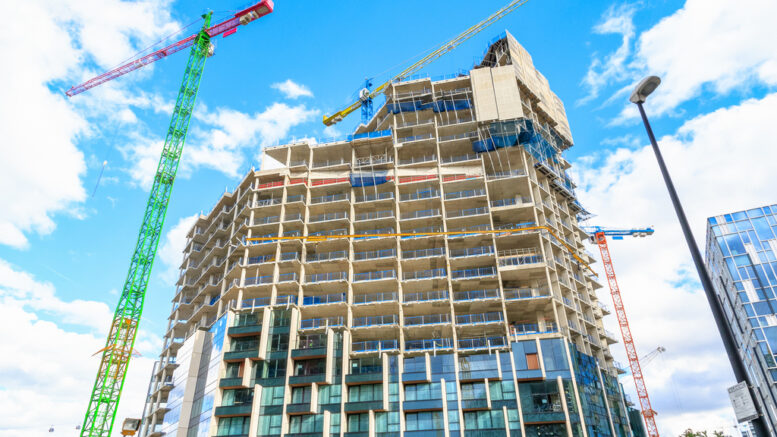A new report from the London Assembly Planning and Regeneration Committee has laid out a series of recommendations aimed at boosting housebuilding in London. The report, titled Unlocking Development in London, calls for more support for small and medium-sized developers (SMEs), changes to the London Plan, and increased incentives to develop on brownfield land.
Housebuilding targets missed as housing crisis deepens
London’s housing crisis has been worsening for years. The number of new homes completed in the capital has dropped significantly - from a high of 45,680 in 2019/20 to just 32,160 in 2023/24. Meanwhile, more than 336,000 people are on council waiting lists for social housing.
A staggering one in 50 Londoners is currently homeless and living in temporary accommodation, according to a 2023 report from London Councils. Boroughs are now spending around £60 million a month on temporary housing, placing a heavy strain on local budgets.
To meet growing demand, the Government has set a new target for nearly 90,000 new homes to be built in London each year until 2030. However, more than 300,000 homes that have already been granted planning permission remain unbuilt - highlighting the need to remove barriers to development.
Andrew Boff AM, Chair of the London Assembly Planning and Regeneration Committee, said the challenges facing developers are clear. “Throughout our investigation, we heard from developers, experts and decision makers about the significant challenges that are facing developers – including the ability of SMEs to access finance, the difficulty of acquiring suitable land, and the complexity of the London Plan,” he explained.
Cutting red tape and supporting small developers
One of the key recommendations in the report is to provide greater financial and logistical support to SME developers. The Greater London Authority (GLA) is being urged to work with the Government to create a system that gives smaller developers better access to funding and larger sites.
Boff stressed the importance of making it easier for SMEs to compete. “We also heard very clear ways to get London building more homes and unlock stalled developments: by simplifying the Mayor’s London Plan, giving SMEs the support they need to access finance and suitable sites, and maximising opportunities to create new affordable homes on brownfield land.”
The report recommends that the next London Plan establish a clear policy hierarchy that gives housing development priority over other land use in suitable areas. This would give local authorities greater confidence in approving residential projects.
Additionally, the GLA is advised to create more flexible planning rules to make the London Plan simpler and clearer. The report suggests carrying out a comprehensive review of existing policies to determine which ones are essential and which could be relaxed.
Brownfield land holds key to affordable housing boost
A major focus of the report is on increasing affordable housing development on brownfield land - unused or underused urban land that has potential for redevelopment. The GLA is encouraged to offer enhanced incentives to developers working on brownfield sites, including grants to help cover the costs of infrastructure and site remediation.
The report also recommends that the GLA establish a London-based version of the Homes England Section 106 clearing service. This would speed up negotiations between developers and local authorities over affordable housing contributions, helping to get projects off the ground more quickly.
Boff made it clear that bold action is needed. “London’s housing crisis is one of the biggest issues facing the capital today, leaving families without suitable homes and draining the budgets of London boroughs through the millions of pounds they are forced to spend on temporary accommodation,” he said. “The Mayor must now act on our recommendations to help deliver more of the homes that Londoners so desperately need.”
Stability and opportunity for landlords
While the report’s focus is on increasing housing supply, landlords stand to benefit from a more stable and predictable market. If the recommendations are implemented, it could lead to greater investment opportunities and higher rental demand - particularly in areas where affordable housing is currently in short supply.
Unlocking brownfield development and supporting smaller developers could also increase the availability of rental properties, helping landlords to expand their portfolios and respond to market demand. The report signals a move towards a more balanced housing market - one where developers, landlords, and tenants alike can benefit from a more streamlined and supportive planning framework.
The ball is now in the Mayor’s court. Whether the recommendations are implemented will depend on political will and cooperation between the GLA, local councils, and the Government. If action is taken, it could finally break the deadlock in London’s housing market - but if not, the housing crisis could deepen even further.








